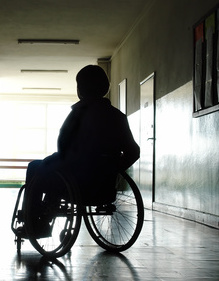To an outsider, Social Security disability benefits may appear to be a ticket to government income. The perception that people receiving disability benefits are lazy is completely false. Anyone with a disability or who works with people with disabilities know how challenging it is to receive disability. The instances of fraud are few and far between: 8.5 million Americans receive SSDI, and 8 million receive SSI. Fraud occurs in less than 2% of these cases.

To cut down on spending, in late 2019 the Trump Administration proposed a modification to how the Social Security Administration reviews its beneficiaries’ claims. The Administration is proposing adding a new category to disability reviews known as “Medical Improvement Likely.” What does this terminology mean, and how will it affect disability recipients?
How Disability Claims Are Reviewed Today
Because disabilities are not static in nature and nobody can predict the future (you may be walking one day and bed bound the next), the SSA performs disability reviews for all approved applicants over time. The frequency of your review will vary depending on your condition and your expected medical improvement. There are currently three categories used for disability reviews:
- Medical Improvement Expected (MIE): this is used for people with conditions where improvement is probable, such as a child born prematurely. Those who fall under MIE receive evaluations every 6 to 18 months.
- Medical Improvement Possible (MIP): this is used for those with conditions where recovery is possible but not guaranteed, such as a woman diagnosed with breast cancer. Those who fall under MIP receive evaluations every 3 years.
- Medical Improvement Not Expected (MINE): This is reserved for those with the most severe disabilities, such as ALS. Those who fall under MINE are evaluated every 7 years.
The new category the Trump Administration has proposed is “Medical Improvement Likely.” Medical Improvement Likely would fall between MIE and MIP and require evaluations every two years.
Who Would Be Affected?
If “Medical Improvement Likely” is approved for disability reviews, an estimated 4.4 million Social Security recipients will be affected. The SSA states that this change will affect not only children, but adults aged 50-65 with multiple disabilities or people with illnesses that make it challenging to work, such as cancer or organ transplant recipients.
How Many Reviews Would Occur?

It’s estimated that this edit to continual disability reviews will require the SSA to perform an additional 2.6 million reviews over the next decade. This will likely become a financial and administrative burden for the SSA, which already experiences heavy delays with its disability application process.
How Complicated Is The Review Process?
This category of the review process will require two forms: one is small, similar to a post card, and the other is a lengthy document topping 15 pages. To be approved under a continual medical review, you will need to keep up with your doctor’s appointments and have a doctor submit a form on your health and progress to the SSA.
Does This Affect Non-English Speakers?
Yes. The current proposal will require forms to submitted in English, and no Spanish or other language alternatives will be provided. This could be problematic for claimants who know English as a second language and were approved by filling out paperwork in their first language.
Has Something Like This Happened Before?
Yes—sort of. The Reagan Administration attempted a similar cut to Social Security disability in the 1980s. Approximately 200,000 people lost benefits, and people with mental health illnesses were disproportionally affected. The law was rolled back promptly in the House of Representatives with a rare bi-partisan vote of 410-1. New legislation was passed, which is the criteria we currently use today.
Is the SSA In Favor of the Proposal?
The SSA is in favor of the new proposal because studies have shown that families may have better outcomes if a child’s benefits are terminated and parents return to work. The SSA states that this increases a parent’s earnings anywhere from $700 to $1,400 per month. Denial of SSI claims for children also reduced the number of SSI or SSDI applications from other members of the child’s household.
What Can You Do?
This proposal has not gone to the House of Representatives or the Senate. The deadline for the public voicing its opinion on the proposal passed on January 31st, but there is still time to call your local representative about the proposal if you are for or against this change to the Social Security Administration.
Sources
https://www.federalregister.gov/documents/2019/02/01/2019-00250/removing-inability-to-communicate-in-english-as-an-education-category https://www.federalregister.gov/documents/2019/11/18/2019-24700/rules-regarding-the-frequency-and-notice-of-continuing-disability-reviews https://www.nytimes.com/1984/04/14/us/reagan-suspends-benefits-cutoff.html
Additional Resources: